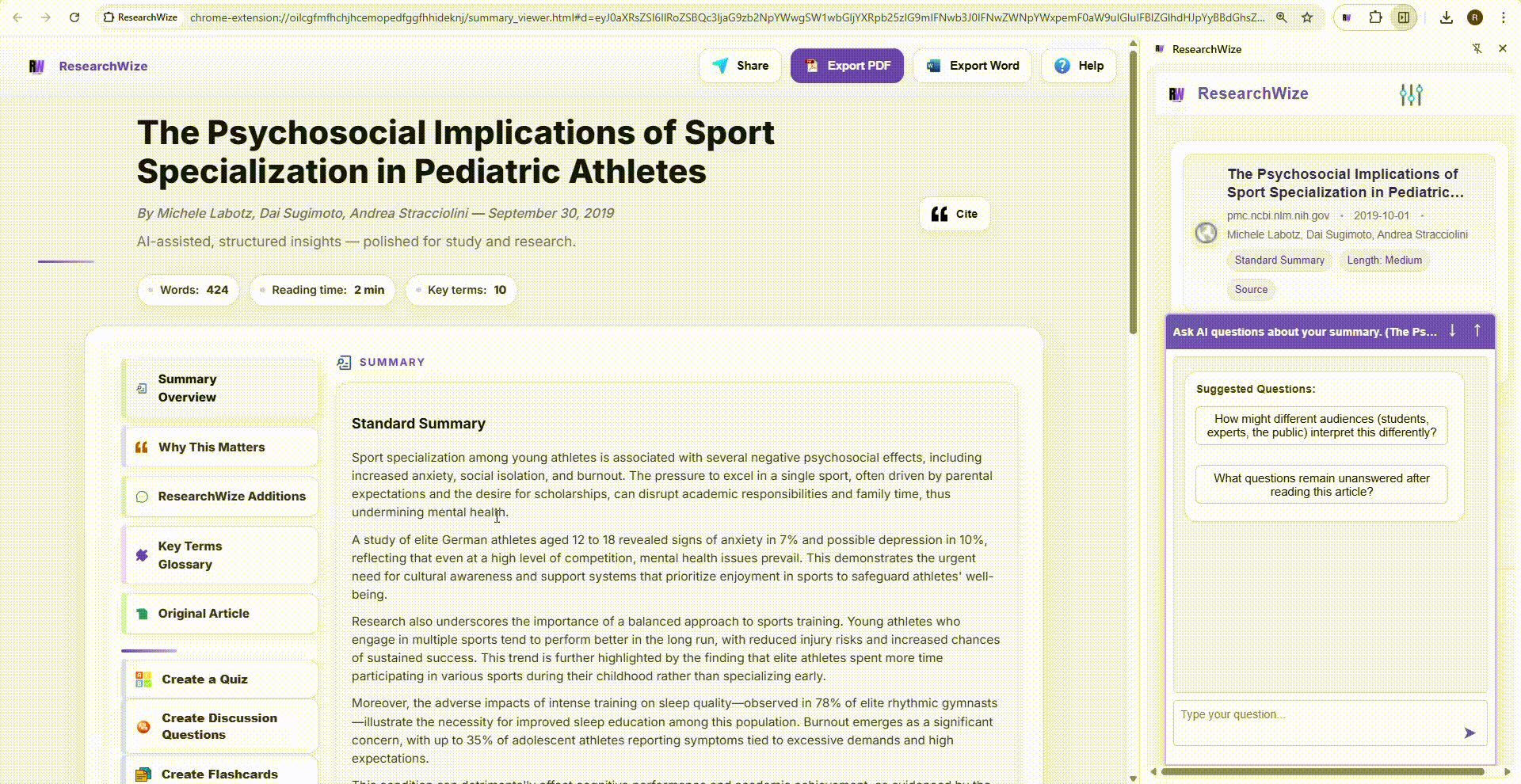Flashcards
Make Flashcards Online
Automatically generate and customise your flashcard deck—turn summaries into high‑retention cards you can truly remember.
- Auto‑extract key terms & definitions from all summaries—deduplicated automatically
- Add, edit or remove cards to personalise your deck
- Autoplay, reverse order & restore your deck with one click
ResearchWize extracts key terms and definitions automatically and deduplicates across summaries—your data stays on your device.

Flashcard modes that work
Auto‑generated term → definition
ResearchWize scans all of your project summaries, extracts key terms and definitions and deduplicates them into a single deck.
Add your own cards
Create cards manually—add key terms with definitions or Q&A pairs to personalise your deck.
Reverse & restore
Flip cards to show definitions first and restore your deck to its original state at any time.
ResearchWize workflow (PDFs, notes, web pages)
- Summarize your source: Use the Web Summarizer or PDF Summarizer to create concise project summaries.
- Auto‑generate flashcards: ResearchWize scans all of your project summaries, extracts key terms and definitions, deduplicates them and builds a single flashcard deck automatically.
- Customise your deck: Add your own key‑term cards, remove any you don’t need and edit questions and answers to fit your curriculum.
- Study smarter: Use autoplay to run through cards, flip the deck to show definitions first and restore your original set anytime.
- Export & share: Download your flashcards as PDF or Word (.DOCX) and share with classmates.
Deck quality checklist
One fact per card
Avoid double‑barreled questions and multi‑step answers.
Plain words
Short, concrete language beats jargon for recall.
Keep context
Prefer cloze or include a short cue to anchor memory.
Balance your set
Mix terms, processes, and examples to cover the topic.
Review rhythm
Revisit decks on a consistent schedule to lock them in.
Source links
Keep references handy so you can double‑check and expand.
Related tools
FAQ: Making Flashcards Online
-
Can I make flashcards from PDFs?
Yes. Summarize the PDF first (scans supported via OCR), then send the summary to Flashcards. -
What card types work best?
Begin with Term→Definition and Question→Answer cards. These formats cover fundamentals and encourage active recall. You can also add your own custom cards as needed. -
How many cards should I create?
Focus on quality over quantity. 20–40 well‑chosen cards per chapter is a good benchmark. -
How do I avoid confusing cards?
Keep one fact per card, avoid negatives, and prefer plain language.
